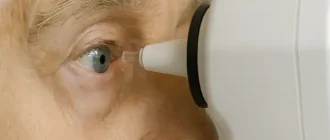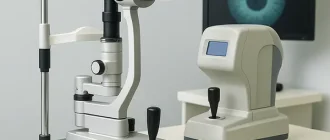Understanding the Global Myopia Crisis
In recent decades, myopia (nearsightedness) has become an increasingly common condition around the globe. It’s estimated that nearly half of the world’s population may be myopic by 2050, making myopia management a pressing public health concern. Factors such as increased screen time, reduced outdoor activity, and a lack of effective early interventions have accelerated myopia progression in children and adolescents.
Why Is Myopia on the Rise?
Experts believe that the modern lifestyle has significantly contributed to this surge in myopia cases. Children today are spending more time indoors, engaging in near-work activities like reading, studying, and, most prominently, using digital screens. According to Dr. Emily Carter from the Global Myopia Association, “The combination of genetics, reduced outdoor activity, and prolonged near work is creating the perfect storm for myopia development.”
While the genetic predisposition plays a role, environmental influences are also key drivers. One study conducted by researchers at the University of Sydney found that children who spent more than three hours a day outdoors had a 35% lower risk of developing myopia. “Exposure to natural light is vital in reducing the risk of myopia progression,” stated Dr. William Henderson, lead researcher on the study.
Emerging Myopia Management Strategies
Chart Representation of Myopia Management Methods1. Orthokeratology (Ortho-K)
Orthokeratology, or Ortho-K, involves the use of specially designed contact lenses that are worn overnight. These lenses reshape the cornea, providing temporary correction for myopia during the day without the need for glasses or daytime contact lenses. Ortho-K has been shown to slow the progression of myopia in children, making it an effective tool for managing this condition.
2. Pharmacological Interventions
Atropine eye drops are another emerging solution in myopia management. Low-dose atropine has shown considerable promise in slowing myopia progression in children. Dr. Mei Ling, a specialist in pediatric optometry, says, “Atropine drops, in low concentrations, are a safe and effective option that can significantly reduce myopia progression, with minimal side effects.”
3. Multifocal Contact Lenses and Spectacles
Multifocal contact lenses and specially designed eyeglasses are being used to create multiple focal zones, reducing the strain caused by near work. These lenses help to slow myopia progression while providing clear vision at different distances. Research indicates that children who use multifocal lenses experience less progression compared to those who use standard lenses.
| Treatment Option | Effectiveness | Benefits | Drawbacks |
|---|---|---|---|
| Orthokeratology (Ortho-K) | High | No need for glasses during day | Needs nightly wear |
| Atropine Eye Drops | Moderate to High | Easy to use, slows progression | Possible mild side effects |
| Multifocal Contact Lenses | Moderate | Corrects vision, slows myopia | May take time to adapt |
| Increased Outdoor Time | Preventive | Natural, overall health benefit | Limited by weather/schedule |
4. Increased Outdoor Activity
Encouraging children to spend more time outdoors is one of the simplest yet most effective ways to combat myopia. Exposure to natural sunlight not only helps with physical health but also reduces the risk of myopia. As parents, ensuring that children get at least 90 minutes of outdoor activity each day can make a significant difference.
5. Lifestyle Modifications
Adopting a lifestyle that includes regular breaks from screen use and near-work activities is essential in managing myopia. For instance, the “20-20-20 rule” (every 20 minutes, look at something 20 feet away for 20 seconds) is highly recommended by optometrists. Dr. Rosa Chen from the Vision Science Institute advises, “Teaching children to be mindful of screen time and encouraging frequent breaks can drastically reduce eye strain and help manage myopia.”
Real-Life Cases: Managing Myopia Effectively
Consider Nathan, a 12-year-old who was diagnosed with myopia at the age of nine. His parents opted for Ortho-K lenses after consulting with an eye care professional. Within three months, Nathan’s eyesight stabilized, and his myopia progression had slowed significantly. Similarly, Chloe, age 10, started using atropine eye drops and now spends more time outdoors; her vision has seen considerable improvement, and her prescription has remained stable over the last year.
Another example is young Samuel, whose parents chose to address his myopia with multifocal glasses. Over 18 months, Samuel’s rate of myopia progression decreased compared to his peers who used standard single-vision glasses.
The Role of Eye Care Professionals
The role of optometrists and ophthalmologists is critical in diagnosing, managing, and providing tailored myopia treatments. Routine eye exams are essential, particularly for children, to detect myopia early and prevent rapid progression. Parents should schedule annual eye exams for their children, and if myopia is detected, discuss the various management options.
Conclusion: A Multifaceted Approach to Myopia Management
Managing myopia is more than just prescribing glasses—it’s about adopting a proactive approach that involves a combination of treatments, lifestyle modifications, and expert guidance. By utilizing methods like Ortho-K, low-dose atropine, and encouraging more outdoor play, parents can help their children manage and even prevent myopia progression effectively.
As the world moves further into the digital age, protecting children’s vision becomes ever more vital. Staying informed about emerging strategies and ensuring consistent follow-ups with healthcare providers is key to addressing this growing challenge.





